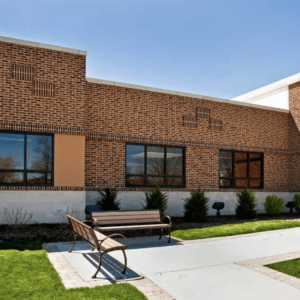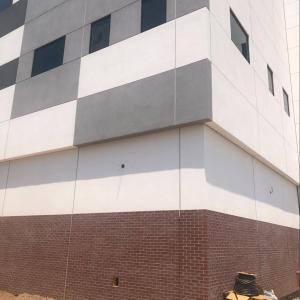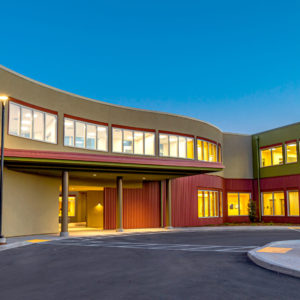Moisture control in buildings should strive to control moisture and air leaks through the building envelope. However, in the event of moisture intrusion, the system must allow the water to evaporate in order to keep the area dry and mold-free.
To control moisture in buildings, the walls of a tight building envelope must include vapor, air, water, and water-shedding layers. Fortunately, Sto Corp’s easy-to-install complete wall systems offer builders and architects these layers in complete systems to effectively ensure optimal moisture control.
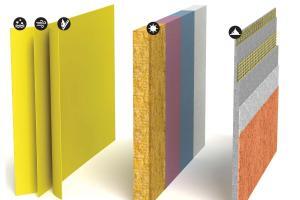
Sto perfect wall envelope solutions include all five planes of control needed to protect the building and create energy-efficient, durable, safe, and sustainable buildings while still providing an aesthetic appeal: vapor, air, water, thermal, and water-shedding control layers.
Why Buildings Need Moisture Control
High-quality moisture control in buildings will protect the occupants from adverse health effects and will also protect the building’s integrity. Moisture control can prevent costly maintenance, repairs, and replacement of the claddings.
Health Implications of Damp in Buildings
A report by the Committee on Damp Indoor Spaces and Health found strong evidence that exposure to moist indoor environments had adverse health effects, including:
- Upper respiratory (throat and nasal) symptoms.
- Cough and wheeze
- Asthma symptoms in sensitized persons with asthma
Furthermore, the committee found suggestive evidence of an association between exposure to moist indoor environments and:
- Dyspnea (shortness of breath)
- Lower respiratory illness in otherwise healthy children
- Asthma
Moisture Damage in Buildings
Moisture can significantly damage building materials and components:
- Water-soluble building materials (e.g. gypsum board) may lose their structural integrity, and become soft and weak when exposed to water.
- Damp conditions can lead to mold, bacteria, and pests (e.g., ants and termites) within the building materials and HVAC systems.
- Corrosion can occur when water combines with oxygen on two metal surfaces, like structural fasteners, wiring, and metal roofing, and can cause the systems to fail.
- Wood products can warp, rot, and swell.
- Freeze/thaw cycles and sub-surface salt deposition can damage brick and concrete.
- Moisture reduces the insulating value (R-value) of thermal insulation.
Features of a Moisture Controlling Building Envelope
A building envelope designed to control moisture intrusion and accumulation should provide the following features:
Control Water
Moisture control in a building must sufficiently keep water from infiltrating the entire building assembly, including roofs, walls, and foundations. The building design should:
- Drain the site by sloping the grade away from the building by diverting surface water from the foundation. In addition, apply a stormwater runoff system to direct rain from the roof into the site drainage system.
- Keep water from leaking into the walls and roof with exterior cladding, roofing, and stormwater management systems to intercept and drain the rain away from the building.
- Locate plumbing lines and components in areas not prone to freezing and not in contact with porous cavity insulation. In addition, keep up with regular maintenance by placing plumbing so you can easily and quickly inspect and repair it.
- Include a capillary break to keep rainwater from wicking through gaps, cracks, or porous building materials.
- Protect moisture-sensitive and porous materials during transport and on-site storage against moisture to avoid enclosing wet materials in new construction.
Limit Condensation
Minimize condensation in the building envelope by limiting indoor humidity and water vapor migration by diffusion and airflow. To limit condensation, the building design should:
- Include a continuous air barrier system around the entire enclosure
- Manage the water vapor and heat flow through enclosure assemblies to avoid condensation on the drainage plane’s materials inboard.
- Follow the 2021 IECC residential and commercial buildings’ thermal building envelope code mandates:
- The 2021 residential International Energy Conservation Code (IECC) Section R402.4 requires the building’s thermal building envelope shall limit air leakage according to Sections R402.4.1 through R402.4.5.
- The 2021 commercial IECC Section C402.5 mandates that the thermal envelope of buildings shall comply with Sections C402.5.1 to C402.5.8.
Use Moisture-Resistant Building Products
Builders should use moisture-tolerant materials, particularly in areas prone to getting wet, like bathrooms, kitchens, laundry rooms, etc.
Achieving Moisture Control in Buildings with Sto Corp
Sto Corp. wall systems provide architects, general contractors, and developers with innovative building envelope technology to control moisture and create sustainable, durable, energy-efficient, and healthy walls with unique and beautiful aesthetics. Sto’s complete wall systems include all the layers required for a high-performance building envelope system that controls moisture: vapor control, air control, water penetration, thermal control, and durable-water shedding layer.

Sto Vapor Permeable Water-Resistive Barrier
A vapor-permeable water-resistive barrier (WRB) under the siding protects walls from vapor, rain, snow, and ice. The WRB must also furnish a way for moisture accumulating in the wall cavity to diffuse through the system and dry. WRBs often function as a structure’s air barrier.
Three principles typically mandate how to control water flow through a building envelope (and its removal) once inside the envelope:
1. Deflect the water with a properly installed water-resistive barrier and cladding.
2. Apply drainage mats that form drainage cavities to direct the water away from the building envelope.
3. Include a WRB with enough permeability so that the wall system quickly dries.
The most effective perm rating for a WRB stops water from infiltrating the wall cavity and allows infiltrated moisture vapor to escape.
- Too high a perm will allow moisture outside to infiltrate the wall system.
- Too low a perm will trap the water within the wall cavity.
The ideal WRB perm for balancing the outward and inward moisture flow within the building envelope falls between 10 and 20 perms. However, the positioning within the wall assembly and climate also affects the WRB permeability.
Sto’s Air Control Layer
A high-quality building envelope stops air transfer (and the moisture contained) between the exterior and interior to regulate the indoor climate. An air barrier must stand up to the differences in air pressure by limiting heat gains and losses through convection, conduction, and radiation. Additionally, air barriers must stop air from transporting moisture to the wall system’s interior to prevent condensation and the damaging effects of moisture and mold.
Vital components of a high-quality air barrier include:
- Continuous over the entire building’s envelope
- Impermeability to airflow
- Structural integrity (durability) over the building’s lifetime
The air barrier should also have the stiffness and strength to withstand forces acting on them during and after construction.
StoGuard® Family of Air and Water-resistive Barriers
Like all Sto wall assemblies, the StoGuard® family of air and water-resistive barrier products provide the initial protection against moisture and air infiltration.
StoGuard® Systems provide seamless control over moisture and air to enhance occupant comfort and building performance. The StoGuard family of products include a set fully compatible accessories that can be used with StoGuard fluid-applied membranes to create StoGuard Air and Water-Resistive Barrier system:
- Sheathing joint treatments that feature a single component, quick-drying multi-use air barrier and waterproof product, a self-adhered membrane, one component fabric or mesh-based solutions that are designed for sheathing protection and seamless joint treatment.
- Fluid-applied water and air-resistive barriers that produce a seamless barrier to resist moisture infiltration and condensation and improve a building’s energy efficiency.
- The StoGuard® System offers superior-seamless rough opening protection in a variety of products including a single component, fast-drying multi-use air barrier, a self-adhered membrane and a mesh-based product.
- A versatile transition membrane for detailing areas to furnish flexible connections and continuity of the air barrier system.
Sto Water-Shedding Control Layer
Managing rainwater intrusion into a building envelope must consider all forces (capillary action, gravity, and wind pressure differences) that drive the water and the components needed to combat and regulate these forces.
Components that control water include:
- Horizontal and vertical plane changes
- A well-defined drainage path
- A continuous watertight membrane
- Flashing systems
A cavity wall (screen wall or drainage) provides a drainage plane and concealed open-air space.
Drainable EIFS StoTherm® ci Wall Systems
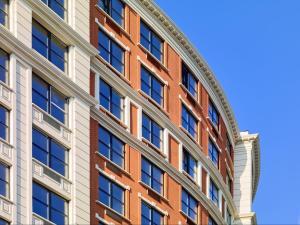
Renovation of this multi-family structure utilized StoTherm® ci with StoSignature™ Stone & StoSignature™ Brick.
Drainable EIFS StoTherm® ci Wall Systems combine drainage, continuous insulation, and an air and water-resistive barrier, to produce a durable and energy-efficient wall system that saves money on utilities, maintenance, and repairs. Sustainable StoTherm® ci wall systems improve indoor air quality and comfort. The StoTherm® Wall System comes in various textured finish options to meet all aesthetic and architectural needs.
Sto’s Thermal Control Layer
Controlling moisture within a building envelope requires continuous insulation (CI) across all building components, without thermal bridges other than fasteners and service openings. Minimizing or eliminating thermal bridging protects the insulation’s R-value. CI controls thermal heat transfer and lessens condensation and temperature fluctuations.
StoVentec® Rainscreen® Systems Furnish Continuous Insulation
StoVentec® Rainscreen® Systems provide a complete solution in a fully-tested, back-ventilated, and code-approved system. In addition, the simple-to-install Rainscreen® system offers thermally efficient CI to limit damaging condensation and reduce the cost of heating and air conditioning.
Its structural frame also improves safety against fire and wind loads. Architects can finish StoVentec® Rainscreen® Systems with traditional masonry, glass, or plaster cladding. Sto’s expansive design flexibility offers many colors, textures, shapes, and materials to fit the needs of any architectural and aesthetic design.
Sto Promotes Durable Building Envelopes
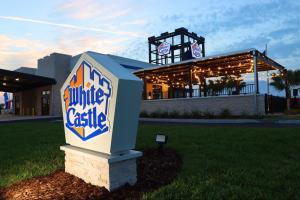
White Castle built their largest restaurant with StoTherm® ci and StoTherm® ci MVES with stone.
A building envelope’s long-term durability and performance depend on its resistance to mold, decay, freeze damage, and corrosion. Building envelopes can fail due to material problems, design flaws, poor workmanship, etc. Selecting simple-to-install and durable products, like StoPanel® MVES ci, will help protect a building envelope’s long-term performance.
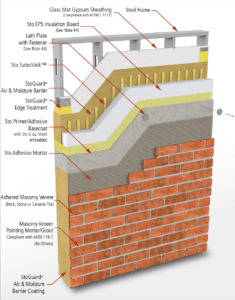
StoPanel® MVES ci includes:
- High-strength masonry veneer (thin brick, cultured stone, natural stone, porcelain and ceramic tile)
- A continuous air and water-resistive barrier
- An engineered insulating wall system
The all-in-one system creates a weather and air-tight wall system with superior durability and thermal performance.
StoQuik® Silver Cement Board Stucco
Straightforward and fast to install StoQuik® Silver DrainScreen® Systems combine various components into one system to produce a moisture-resistant, high-impact exterior wall finish that quickens delivery time and reduces labor costs compared to traditional stucco:
- Provides moisture protection with an air and water-resistive barrier
- A drainage mat to drain and dry
- Versatile design and performance options of Sto’s numerous textured finishes
- Cement board substrate for impact resistance
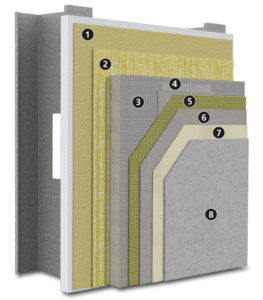
Sto Finishes
Sto offers a wide selection of finishes in a variety of aesthetics and textures and an extensive range of color options to enhance your design and harmonize with the surrounding environment. Sto Finishes are durable, resist dirt and water, and are manufactured to high quality standards. They serve to protect the building in addition to providing outstanding curb appeal.
Hurricane Impact Systems
Sto Hurricane Impact (HI) Systems offer high-impact protection for coastal construction prone to hurricanes, tropical storms, wind-borne debris, and water infiltration – events that lead to building envelope failure. Sto HI systems meet the strict Miami-Dade County, Florida NOA mandates for water and air infiltrations, wind load resistance, and impact resistance.
Sto Corp Systems Offer Moisture Control in Buildings
Quick and straightforward to install, Sto Systems offers contractors, architects, and developers a tested and innovative high-performance building envelope solution to controlling moisture infiltration and accumulation. Sto’s single-product wall systems deliver on all performance needs, save time and money, and reduce labor, risk, and complexity compared to systems that need many components from multiple sources. To learn more about Sto’s engineered wall systems, download The Case for Engineered Building Enclosure Systems.
Independent testing shows that Sto systems control moisture by meeting water infiltration and ventilation performance specifications, water resistance, wind load resistance, impact resistance, flame spread, and accelerated weathering.
Contact us today for more on moisture control in buildings to create a durable, sustainable, and safe building envelope.
